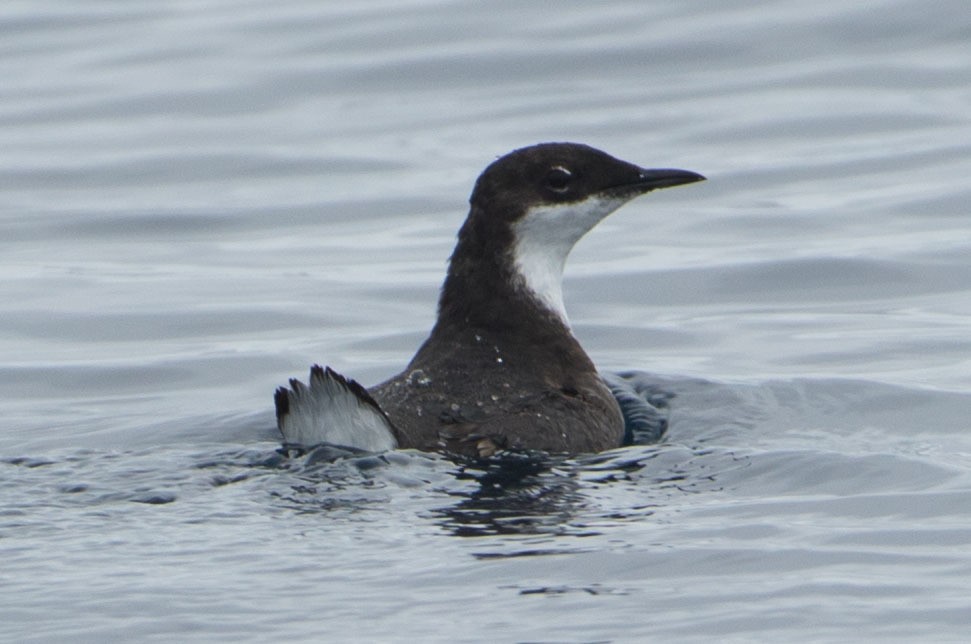Craveri's Murrelet
A species of Ancient and Southern Murrelets Scientific name : Synthliboramphus craveri Genus : Ancient and Southern Murrelets
Craveri's Murrelet, A species of Ancient and Southern Murrelets
Botanical name: Synthliboramphus craveri
Genus: Ancient and Southern Murrelets
Content
Description General Info
 Photo By BJ Stacey , used under CC-BY-NC /Cropped and compressed from original
Photo By BJ Stacey , used under CC-BY-NC /Cropped and compressed from original Description
The Craveri's murrelet is a small black and white auk with a small head and thin sharp bill. It resembles the closely related Scripps's murrelet, with which it shares the distinction of being the most southerly living of all the auk species. The Craveri's murrelet has a partial neck collar (Scripps's has none), and dusky underwings (Scripps's has white underwings). Craveri's black face mask dips a bit further down the face compared to the Scripps's. Both species can be also separated by voice. 
Size
13 - 23 cm
Nest Placement
Cavity
Feeding Habits
Craveri's Murrelet predominantly feeds on small fish and invertebrates, employing diving techniques to capture prey. Notable for its piscivorous nature, specialized for consuming marine life within its oceanic habitat.
Habitat
Craveri's Murrelet's habitat is predominantly offshore maritime environments and along sea coasts within warm waters. These birds favor habitats like steep sea cliffs and maritime slopes for breeding, usually on islands. Geographically, craveri's Murrelet inhabits broader warm pelagic waters of the California Current. During winter, craveri's Murrelet remains offshore, often far from shore but still within or adjacent to its breeding range, which extends to the southernmost point of alcids.
Dite type
Piscivorous
General Info
Feeding Habits
Bird food type
Behavior
Craveri's murrelet feeds far out at sea on larval fish such as herring, rockfish, and lanternfish. Like all auks it is a wing-propelled diver, chasing down prey under the water with powerful wingbeats. It flies well, and can take off without taxiing. The Craveri's murrelet nests in small crevices, caves and under dense bushes on arid islands in loose scattered colonies. It returns to the colony only at night, laying two eggs which are incubated for about a month. Like other murrelets of the genus Synthliboramphus (like the ancient murrelet) the chicks are highly precocial, leaving the nest within two days of hatching and running actively towards the sea, where the parents call to them. Once at sea the family swims to offshore waters. Little is known about the time at sea due to difficulties in studying them. 
Species Status
Craveri's murrelet is considered by some to be one of the more endangered species of auk. It is threatened by offshore oil drilling and tanker traffic. Increased tourist developments and birds getting caught in nets from commercial fishing operations also pose a danger. It is also threatened by introduced species such as mice, rats and feral cats; this threat has been lessened lately by efforts to restore its habitat by removing introduced predators. 